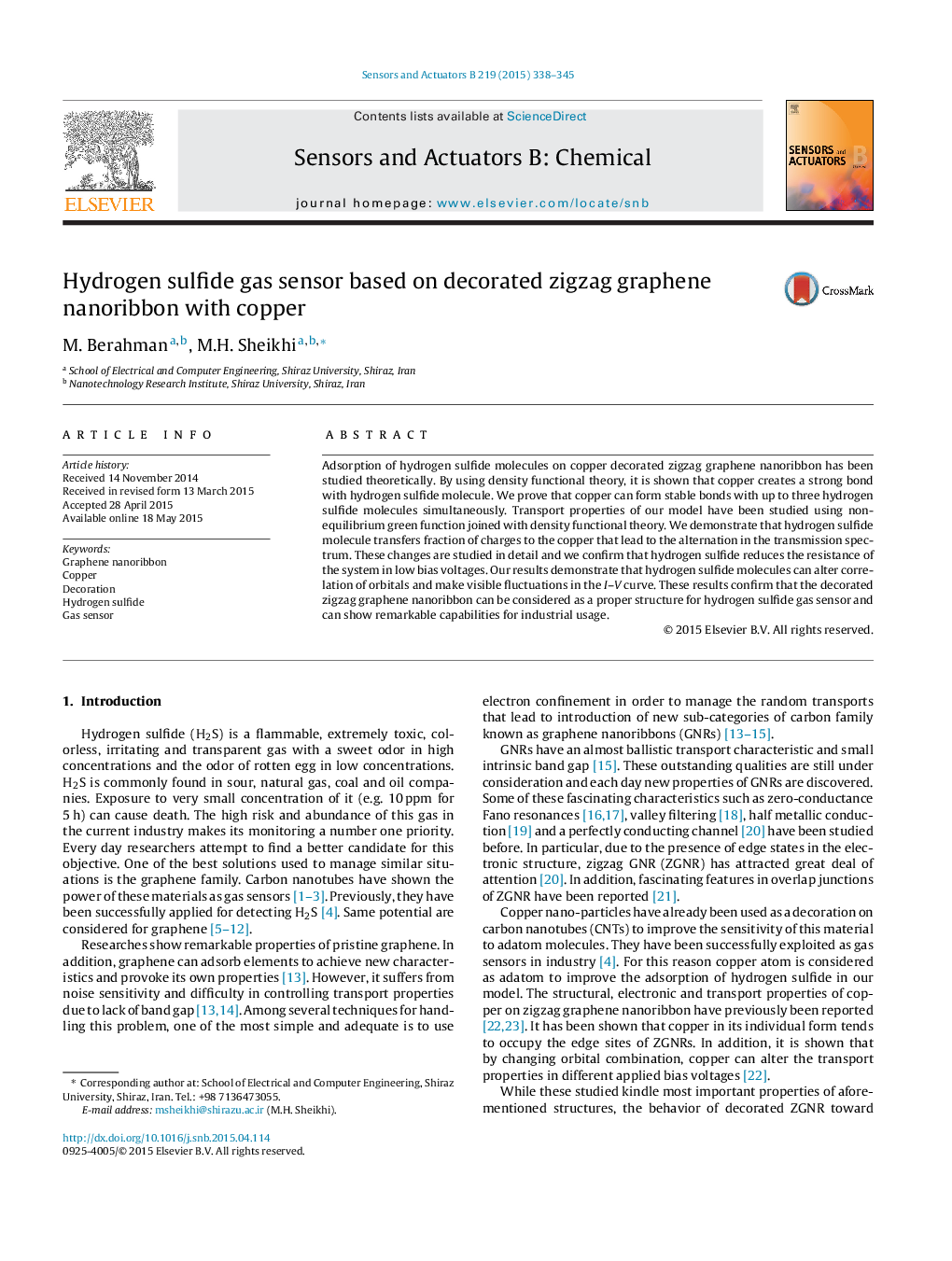| Article ID | Journal | Published Year | Pages | File Type |
|---|---|---|---|---|
| 741633 | Sensors and Actuators B: Chemical | 2015 | 8 Pages |
•The hydrogen sulfide molecules’ adsorption on decoration Z-GNR is fully studied in a comprehensive and systematic way.•We have shown the structural deformation due to hydrogen sulfide molecules on Z-GNR.•The charge transfer responsible orbitals have been studied in detail.•The formation and fluctuation of IV curves are reported for the first time and studied in detail.•We show that copper can improve the adsorption of hydrogen sulfide on Z-GNR. We also calculate that best bias voltage for detecting high sensitivity for the system.
Adsorption of hydrogen sulfide molecules on copper decorated zigzag graphene nanoribbon has been studied theoretically. By using density functional theory, it is shown that copper creates a strong bond with hydrogen sulfide molecule. We prove that copper can form stable bonds with up to three hydrogen sulfide molecules simultaneously. Transport properties of our model have been studied using non-equilibrium green function joined with density functional theory. We demonstrate that hydrogen sulfide molecule transfers fraction of charges to the copper that lead to the alternation in the transmission spectrum. These changes are studied in detail and we confirm that hydrogen sulfide reduces the resistance of the system in low bias voltages. Our results demonstrate that hydrogen sulfide molecules can alter correlation of orbitals and make visible fluctuations in the I–V curve. These results confirm that the decorated zigzag graphene nanoribbon can be considered as a proper structure for hydrogen sulfide gas sensor and can show remarkable capabilities for industrial usage.
